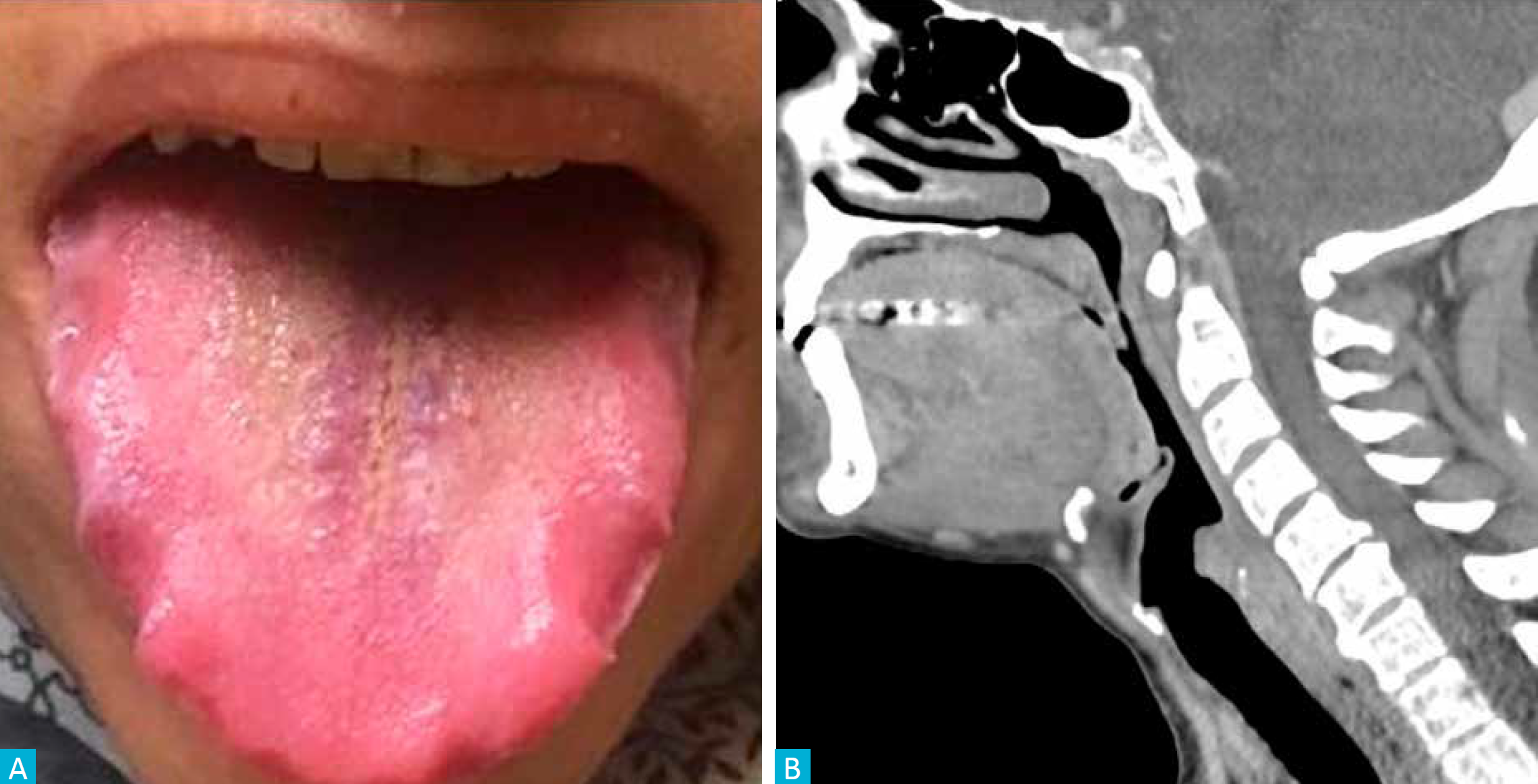A 54-year-old woman with a past history of breast and uterine cancer, appeared at the Emergency Room with a six-month history of fatigue, weight loss (> 12 kg), lower limbs swelling and dysphagia due to progressive tongue enlargement. ENT examination demonstrated macroglossia (Fig. 1-A), that was confirmed by computed tomography (CT) scan (Fig. 1-B). Laboratory tests complemented with image findings showed the presence of a restrictive cardiomyopathy and a nephrotic syndrome.

Figure 1: (A) Macroglossia with indentations from teeth; (B) Macroglossia on the head and neck CT, sagittal view.
The abdominal fat biopsy with immunofixation electrophoresis was positive for light-chain amyloidosis. The patient began chemotherapy treatment with bortezomib, dexamethasone and cyclophosphamide, completing four cycles of treatment with frank tongue reduction.
The patient died 5 months after the diagnosis.
Tissue deposition of protein fibrils causes a group of rare diseases called amyloidosis, with light-chain amyloidosis (AL) being the most common type. Although it is considered to be a highly specific finding of AL, macroglossia is only found in about 10%-20% of cases. Tongue nodules, papules or ulcers can also appear in AL patients.1 In addition to the head and neck region, it can affect important vital organs like the heart, kidneys or liver, potentially causing irreversible damage, and a poor overall prognosis.
The diagnosis is usually made with biopsy, with Red Congo staining producing a pathognomonic birefringence green under polarized microscopy. The treatment includes chemotherapy and autologous stem cell transplant.1,2
An uncommon clinical finding like macroglossia can be present in tuberculosis, acromegaly, hypothyroidism and genetic syndromes, among others.1,3 Amyloidosis is an important differential diagnosis to keep in mind, since an early diagnosis and timely treatment can improve the outcome of an otherwise poor prognosis disease.















